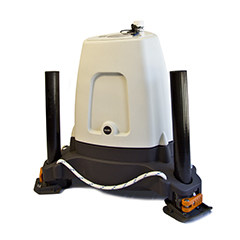18 June 2018: ZephIR Lidar has announced that its ground-based vertical profiling wind Lidar has successfully met the full conditions for satisfying the IEC 61400-12-1: 2017 Ed. 2 standard. The concluding analysis demonstrates very low uncertainties and validates again that Lidar is an acceptable technology for inclusion in the wide variety of wind campaigns and applications including resource assessment, site calibration and power curve measurements.
“Lidar is IEC classified. Let me say that again… Lidar is IEC classified,” announced Ian Locker, Managing Director at ZephIR Lidar. “This really is a significant step for Lidar technology and our industry as a whole. Consultants, developers and turbine manufacturers within the wind sector can take further confidence in the technology’s absolute ability to measure across a range of environmental conditions. The results are independently verified, making any compliant Lidar technology appropriate and accepted for a wide variety of wind measurement use cases including resource assessment and site calibration through to formal power curve tests. So long as your Lidar is IEC compliant, customers can now select their measurement device based on reliability, affordability, flexibility, warranty, customer support, user experience and preference. The accuracy and performance box for Lidar is now ticked as default, if classified!”
Before release of the Edition 2 standard in March 2017, ZephIR Lidar had been preparing its classification campaigns and the results released today demonstrate industry-leading compliance, highlighting the highest accuracy of its ground-based Lidar with very low uncertainties on measurement data. The IEC standard involves the classification of a remote sensing device type by assessing the accuracy of that device in the context of the environmental conditions experienced from two separate test sites. The same unit is deployed at each site over a period of three months or more and an additional unit is also deployed at one of the same test sites.
Results released today feature campaigns from a DNV GL Remote Sensing Test Site, in addition to the UK Remote Sensing Test Site which is also assessed for IEC compliance by DNV GL.
Test Results
The classifications covered deployments in Autumn, Winter and Spring, 2017 through to early 2018 meaning a wide range of environmental conditions were experienced. The environmental variables considered in the classification included: Air Density; Local Shear Coefficient; Pressure; Rain; Temperature; Temperature Gradient; Turbulence Intensity; Veer Coefficient; Wind Direction.
By way of summary, accuracy classes of 1.5 to 3.7 were calculated for ZephIR. As an example, an accuracy class of 1.5 represents a standard uncertainty of just 0.8%.
In addition to this classification work, more than 300 Performance Verifications of ZephIR have been conducted to date demonstrating repeatability in achieving these very low uncertainties.


























